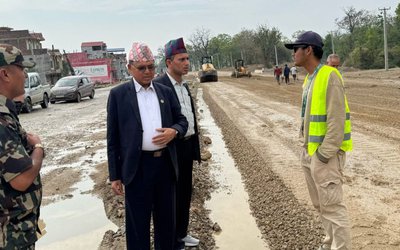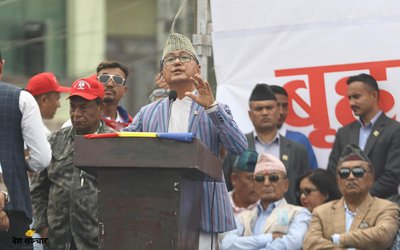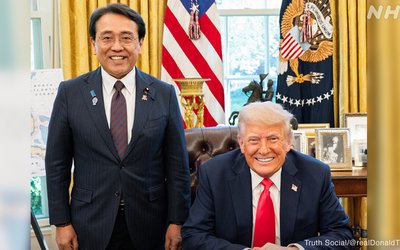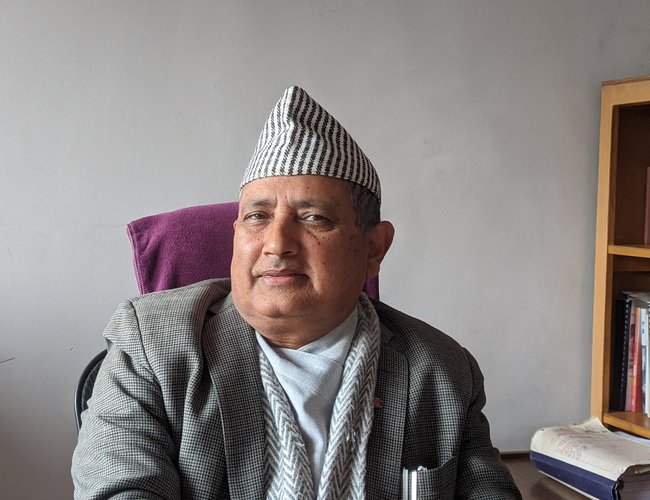
As Nepal is moving towards achieving the target for clean energy, how do you see the preparation?
Nepal has made significant progress in increasing its clean energy generation capacity and is now focusing on improving its infrastructure to better utilize this energy domestically. It is important to have a strong transmission and distribution system in place to ensure that the generated electricity can be effectively distributed and used. It is also good to see that Nepal is prioritizing domestic use of electricity before exporting any excess. It is always beneficial for a country to prioritize meeting the energy needs of its own citizens before exporting resources. It is understandable that it may take some time to build the necessary infrastructure to increase demand, but it is important to continue making progress in this area to ensure a reliable and sustainable energy supply for the country.
What is the priority of Nepal?
Our priority is to use electricity domestically. We will export the electricity that is left out after domestic use. Now we are exporting electricity because we have a surplus. Because of a lack integrate planning for the transmission, distribution and generation in the past, we are unable to increase our domestic consumption even after the completion of major projects like 456 MW Upper Tamakoshi. We have load demand but we don't have the infrastructures to supply it. It will take some time to build infrastructures to escalate demand. There is generation and investments have already been made including about Rs.90 billion in Upper Tamakoshi. In this scenario, we have completed exporting electricity to protect the investment.
How do you see the possibility of increasing domestic consumption?
It's certainly true that increasing domestic consumption of electricity can be beneficial for Nepal's economic growth and prosperity. However, it's also important to consider the potential benefits of exporting electricity to other countries. Exporting electricity can be a source of revenue for Nepal, and it can also help to strengthen international relationships and increase trade. Additionally, exporting electricity can help to stabilize the domestic electricity market by providing a reliable source of demand for excess electricity that might not be needed domestically. It's important for Nepal to carefully consider both the potential benefits and potential drawbacks of exporting electricity, and to develop a strategy that takes into account all of these factors.
How does Nepal contribute to global emission reduction?
It is true that Nepal's clean hydropower has the potential to contribute to global emission reduction efforts. Hydropower is a renewable energy source that does not produce greenhouse gas emissions during operation, making it a valuable option for countries looking to reduce their carbon footprint. Exporting hydropower to other countries can also be a source of revenue for Nepal, which could be used to fund further development of the country's energy infrastructure.
However, it is important to consider the potential environmental impacts of hydroelectric projects and ensure that they are developed in a sustainable manner. Large hydroelectric projects can have significant impacts on local ecosystems, including the displacement of communities and changes to the natural flow of rivers. It is important to consider these impacts and take steps to minimize them whenever possible.
You attended the COP27 Cairo. How do you present Nepal's case?
During the UNFCCC COP27 in Cairo, Nepal firmly supported the agenda for global emission reduction. It sounds like Nepal is taking significant steps towards reducing its emissions and working towards a sustainable future. The commitment to achieving net-zero emissions by 2050 or even before 2045 is a ambitious and important goal. It is important for all countries to take action to reduce their emissions in order to address the global challenge of climate change. It is heartening to hear that Nepal is actively working towards this goal and participating in international discussions on emission reduction.
I have presented Nepal's energy scenario and the potential to generate clean energy. As Nepal has committed its position to zero emissions through Social Development Goals 2030 and NDC, how do you present the state of Nepal? Nepal has already announced its long-term strategy for net-zero emissions through NDC. We have been working to achieve it. Nepal's goal is to achieve net zero emissions by 2050, whilst reaching net zero before or by 2045.
As the new NDC states that Nepal is in the process of formulating a long-term low greenhouse gas (GHG) emission development strategy to be ready this year and aiming to achieve net-zero GHG emissions by 2050, what Ministry of Energy, Water Resources and Irrigation view?
Since Nepal's goal is to be carbon-free by 2045. Similarly, Nepal has committed to providing 15 percent of the country's overall energy consumption from clean energy sources by 2030. The ministry has already submitted its target to the National Planning Commission. Nepal has ambitious goals for increasing the use of clean energy and reducing its carbon emissions. It will be important for the government to work closely with various agencies and stakeholders to ensure that these goals are met. This may involve developing policies and regulations to promote the use of clean energy, providing incentives for individuals and businesses to switch to clean energy sources, and investing in research and development to improve the efficiency and cost-effectiveness of clean energy technologies. It may also be necessary to address any challenges or barriers that may be hindering the adoption of clean energy in Nepal. However, there needs to be more coordination among different ministries. The Ministry of Energy is a key ministry responsible for implementing energy components. We have been doing so now through the Nepal Electricity Authority and Alternative Energy Promotion Centers.
What steps is the government taking now?
We are also working to strengthen the public transportation network and turn more vehicles electric by 2030 to achieve carbon neutrality. The Nepal Electricity Authority has been investing huge resources in strengthening the distribution system and expansion of transmission lines. Along with promoting electric cooking, NEA has already installed electric charging stations in different parts of Nepal to charge electric vehicles. The Ministry is committed to taking action to support the initiatives of SDGs by improving access to efficient and environmentally friendly energy sources. In this regard, the Ministry has already announced programs to replace LPG with electric cooking and other clean energy sources, including biogas.
How do you see the hydropower sector?
The Nepal Electricity Authority (NEA) has been working its best to improve the expanded distribution systems and transmission system. Despite many obstructions, it is doing its best. Hydropower development is an emerging sector that provides clean energy resources in Nepal. The currently installed hydroelectricity capacity has crossed over 1200 MW. The increasing trend in hydroelectricity development in Nepal is expected to meet the country's demand for cleaner energy to improve the quality of life for its citizens. As the installed hydroelectricity capacity increases, the GDP per capita tends to increase. Therefore, there is an urgent need to increase electricity production to increase the socioeconomic development of the people.
As clean energy is a core agenda in the UNFCCC negotiations, particularly in the context of emission reduction, how much does the Ministry represent in such negotiations?
Given the current global scenario, the representation of ministries in such global negotiations is inevitable. For instance, Nepal has a high level of energy-based-CO2 and Nepal does not have other alternatives than zero-emission hydropower. So far as the representation issue of the Ministry in such negotiations is concerned, it needs to increase. We need to do more homework and preparation among the ministries. We also participated in the COP27 under the leadership of the Ministry of Forest and Environment. My experience is that we should have done the homework and prepared for one month well. We should have discussed what outstanding issues were raised in COP26 and what Nepal should prepare for COP27. Had we participated in the COP27 with adequate preparation based upon the role of sectoral ministry, Nepal's position would have been more effectively raised. It does not mean that Nepal has not made an effort. However, it would produce strong results and excellent results. After taking part in the meeting, I also discussed the issue with the secretary of the Ministry of Forest and Environment and they acknowledged our point. Because of a lack of preparation and coordination, our presentations were ad-hoc and it affected our presentations.
How does the Ministry present its opinion?
Our ministry has been regularly presenting its views and sharing our policies on energy issues through the National Planning Commission, cabinet secretariat and various inter-ministerial meetings. On our part, the Ministry of Energy, Water Resources and Irrigation has been doing its best. Along with the Nepal Electricity Authority, the Alternative Energy Promotion Center has been actively implementing the programs to fulfill NDC's goal and SDGs. We regularly have secretary-level round table meetings. We have been working in the area.
As the report has shown that the use of induction has increased as many folds as the number of electric vehicles, is Nepal at the stage of the energy transition? Do you see any major shift in the foreseeable future in ten years?
Nepal has already gained momentum in the energy transition. I have a concise case to prove it. During my tenure as a secretary at the Water and Energy Commission, we did a study on energy transition. a part of our study, we randomly visited a few industries in two different provinces. Charging of the Mahinia-Nautunwa cross border transmission line has had a significant impact on the energy transition in Bhairawa, specifically in the industries we visited. The increased reliability of the power supply has allowed these industries to switch from using fossil fuels to electricity, which can have environmental benefits. It's also good to hear that these industries no longer have to rely on stockpiling energy sources due to unreliable power supplies. This is a positive development in the transition towards a more sustainable energy system. Do you have any other examples or information about Nepal's progress in the energy transition?
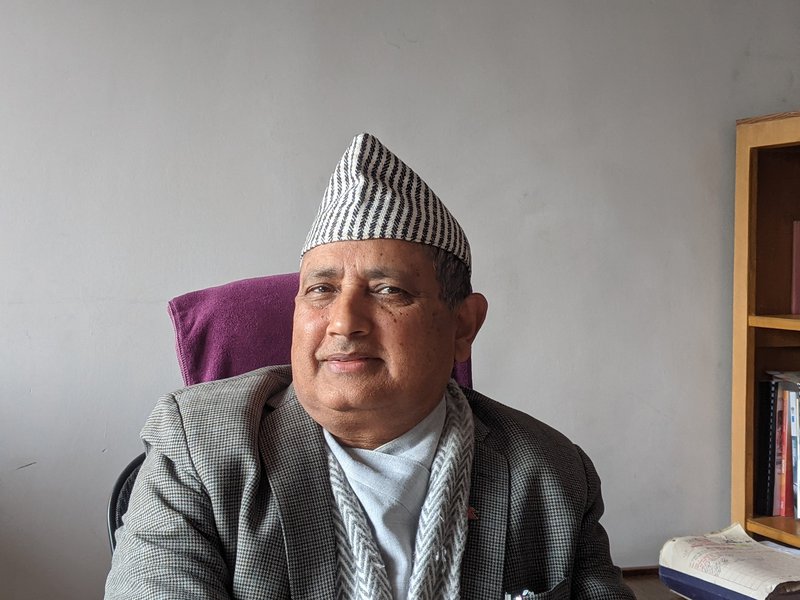
Where did you visit?
Our first visit was to an industry in Bhairawa. During our studies, we went to three different industries: Ambe Steel, Jagadaamba Cement and Jagadamba Spinning Mills. We found that these three industries have already moved forward to the energy transition. They used to furnish oil, husk, and coal for the boiler. However, they now have a big stock of such energy sources and are searching for a market to sell those products. After the charging of the Mahinia-Nautunwa 132 kV cross-border transmission line, the tipping of electricity came to an end. Due to a reliable supply of electricity, these industries switched to electricity. In the past, they used to depend on those sources because of unreliable power supplies. These three industries secured the supply from the Mahinia substation. We got the feedback that there is virtually zero tipping after the charging of the transmission line. This shows that the reliability of the power supply is key to transforming energy.
What is the state of the industry?
All three industries are now exploring the market to sell their stock of furnished oil, husk and coal for around Rs.50 million. Frequent tipping increased the cost of production as well. They are all using electricity now, which is cheaper than other energy sources. Compared to their monthly energy cost of Rs.50 million to furnish oil, husk and coal, they are now paying merely Rs. 30 million for electricity. They save a hundred percent of the fuel cost. Another encouraging sign is that they also increase productivity. Jagadamba Spinning Mill's market is around the world with 60 percent India, 20 percent Nepal and 20 percent Turkey. After the regular supply of electricity, their production capacity has increased from 25000 metric tons to 48,000 metric tons. Earlier, they had 3 MVA transformers and upgraded to 6 MVA and now they are planning to install an 8.5 MVA transformer. In a liberalized and open market, supply creates demand. These three industrial cases show that reliability in supply will increase market demand. Once the demand increases, it will replace coal, furnish oil, diesel and husk with clean hydroelectricity. They are already in transition to clean energy. This situation is gradually moving in the industrial sector. However, our challenges are to build infrastructures and supply reliable electricity.
Have you also done studies on the implications of frequent tipping?
Yes, we also did it. During our study, we also encountered a problem faced by the dairy industry in Surkhet due to frequent tipping of electricity. Having lost a huge If we are not able to strengthen the transmission line and distribution system, we will also visit a local dairy in Surkhet which is still heavily dependent upon fossil fuels declining to connect with NEA's grid. Due to frequent tipping, the Diary does not want to switch to NEA's grid as the diary requires an uninterrupted power supply. These two studies have shown that a reliable supply of electricity in the domestic market can replace fossil fuels.
What outcome do you draw?
It shows that the supply of electricity is not long enough. What is important is that quality and uninterrupted supply is key to increasing domestic demand. Although Surkhet has NEA's grid supply, it is unreliable and low quality. We are now talking about the surplus of generation and low demand. Given the two studies, what I have seen is that the demand will automatically increase once we provide regular electricity. Enhancing the infrastructure and reliability is highly important to replace fossil-based energy. Our strategy is to replace fossil fuels with clean electricity. The use of clean energy has been increasing from 3 percent in the past to now 7 percent, including renewable energy.

Keshab Poudel
Poudel is the editor of New Spotlight Magazine.
- KUL MAN GHISING: Bowing Down To The People
- Apr 13, 2025
- POLITICAL VIOLENCE: Culture of Impunity
- Apr 11, 2025
- PM OLI MEETS PM MODI: No Progress
- Apr 09, 2025
- PM OLI’S THAILAND VISIT: Flip Flop
- Apr 08, 2025
- FM Dr. Deuba’s India Visit: Mission Aborted
- Mar 26, 2025








